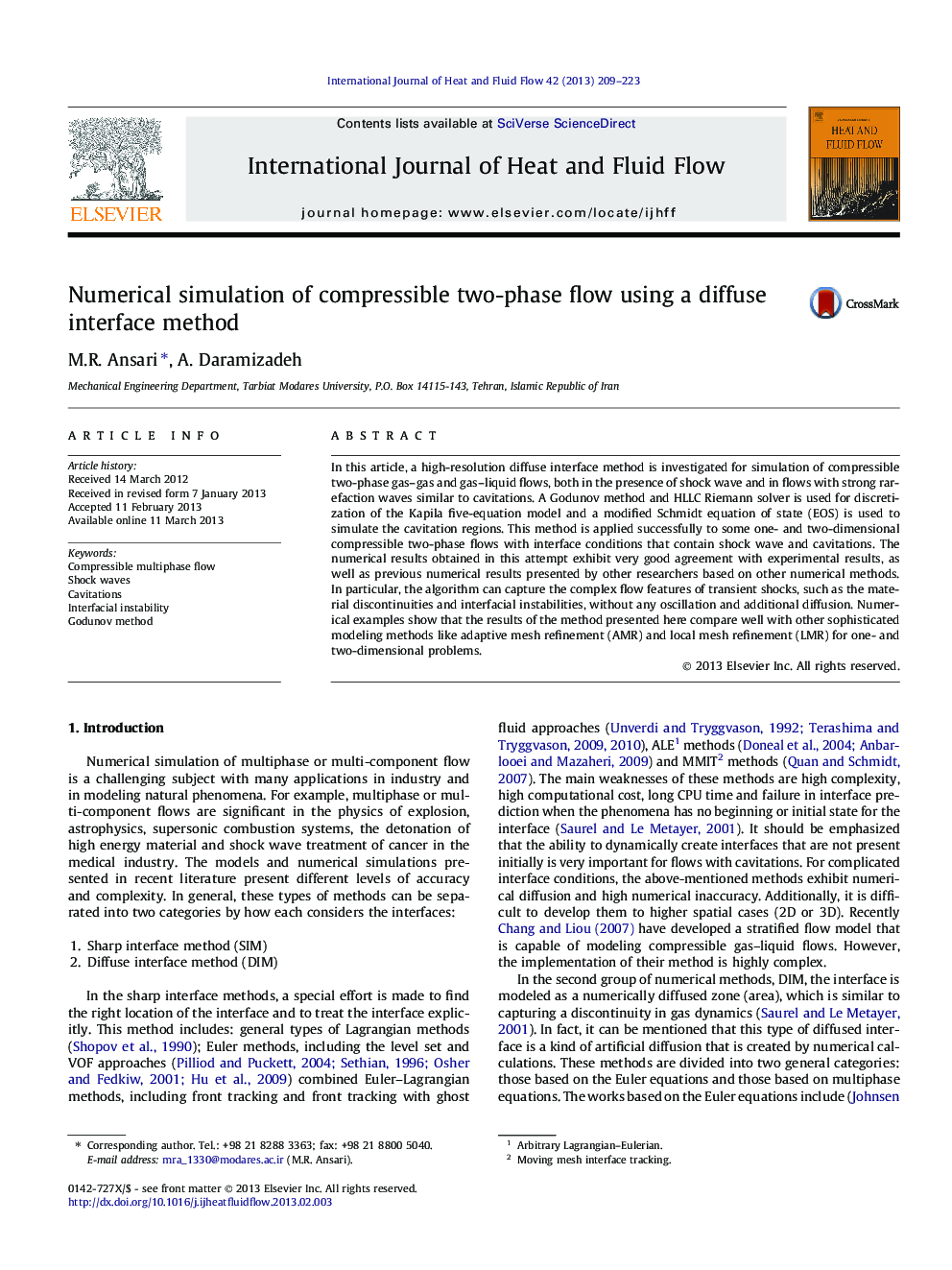| Article ID | Journal | Published Year | Pages | File Type |
|---|---|---|---|---|
| 655607 | International Journal of Heat and Fluid Flow | 2013 | 15 Pages |
In this article, a high-resolution diffuse interface method is investigated for simulation of compressible two-phase gas–gas and gas–liquid flows, both in the presence of shock wave and in flows with strong rarefaction waves similar to cavitations. A Godunov method and HLLC Riemann solver is used for discretization of the Kapila five-equation model and a modified Schmidt equation of state (EOS) is used to simulate the cavitation regions. This method is applied successfully to some one- and two-dimensional compressible two-phase flows with interface conditions that contain shock wave and cavitations. The numerical results obtained in this attempt exhibit very good agreement with experimental results, as well as previous numerical results presented by other researchers based on other numerical methods. In particular, the algorithm can capture the complex flow features of transient shocks, such as the material discontinuities and interfacial instabilities, without any oscillation and additional diffusion. Numerical examples show that the results of the method presented here compare well with other sophisticated modeling methods like adaptive mesh refinement (AMR) and local mesh refinement (LMR) for one- and two-dimensional problems.
► Compressible two-phase gas–gas and gas–liquid flows simulation are conducted. ► Interface conditions contain shock wave and cavitations. ► A high-resolution diffuse interface method is investigated. ► The numerical results exhibit very good agreement with experimental results.
